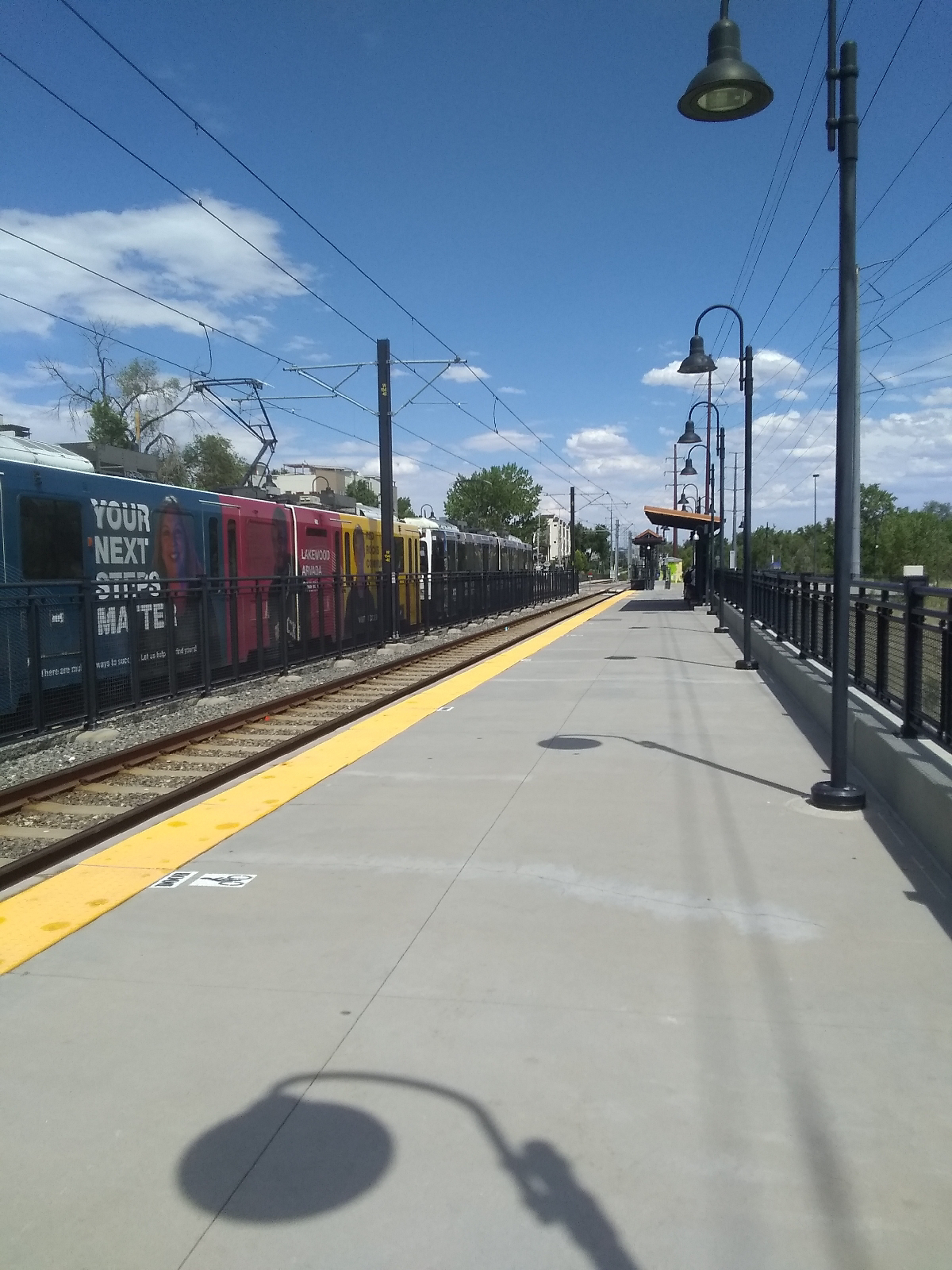The little cabin is the top of one of the elevators on the bridge over Sheridan Station. The bus stops on the bridge and there's a large parking garage south of the bridge. Sheridan Boulevard is one of the main north/south corridors in East Denver.
I had an errand to run, so I took a short walk to the convenience store just south of the station and cycled back down through the parking garage to the light rail station. Dry Gulch Trail starts here.
This stretch of trail (and the next) are only a half mile long. I'm very tempted to just take the next 3.3 miles and finish the W Line hikes, but I don't want to rush it and miss something interesting.
I always see people walking this trail when I come through here on the train, so it's a popular stretch.
Downtown Denver is close here.
A recurring element in the Denver metro area is community gardens. I see both vegetables and ornamentals. And I usually see local residents puttering around in them, so they are used, and I get the idea that they are places where neighbors meet casually.
Meanders are interesting and inevitable when water is streaming. If you let a thin stream of water run across an absolutely flat pane of glass, the track it takes will not be straight. Of course, at the microscopic level, no surface is absolutely flat. Atoms are bumpy, and there in lies the beginning of a meander. Throw in the fact that the Earth is constantly rotating out from under anything on it's surface (that's called the Coriolis pseudo-force..."pseudo-force" because it looks like something is pushing things out of the way) and it would be hard for anything to move in a straight line.
Once a stream veers from a straight course, it exerts more force on one bank than the other and the curve of that section is increased. Streams in mountainous or hilly surroundings tend to follow the lay of the land. Streams in flat areas are the ones that meander wildly. Pull up a map of a plains river like the Mississippi or the Platte and look at it's course.
The streams in my area have just plunged from the Rockies or have dropped into the South Platte River valley so they have a lot of energy that allows them to forge straight ahead.
Perry Station is one of the smaller stations on the W Line. Dry Gulch flows close by and it's a short stroll from the trail to the light rail station. The main art attraction here is Interconnectivity by Joshua Wiener.
It lights up at night to add a little more illumination to the station at night. I've mentioned that all the light rail stations display art on the rail shacks and windscreens. You can see a couple of the outbuildings behind the Interconnectivity sculpture. Here are some more pictures from around Perry Station.
These windscreens emphasize recreation and community.
I'm just three hikes from the end of the W Line. The next hike will bring me to the confluence of the Lakewood and Dry Gulches and the last will show me where Lakewood Gulch meets the South Platte River.













No comments:
Post a Comment